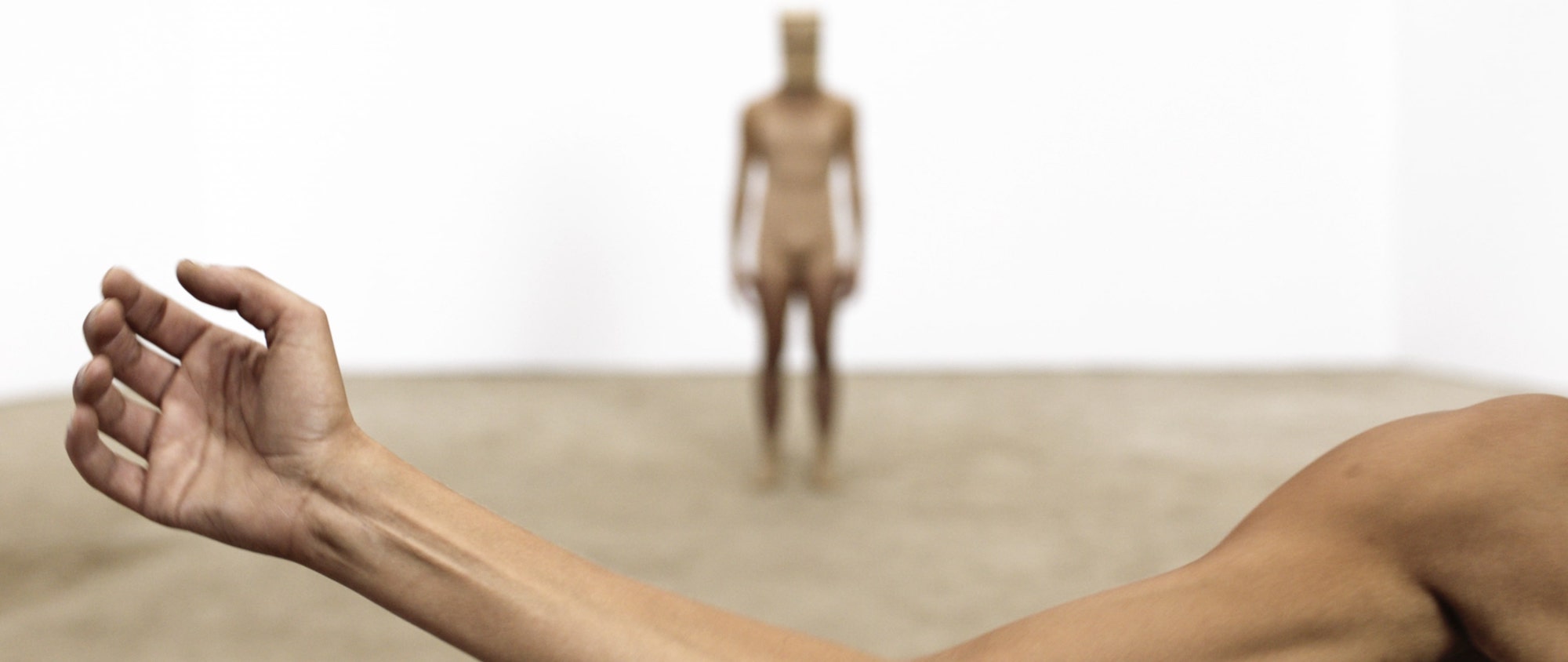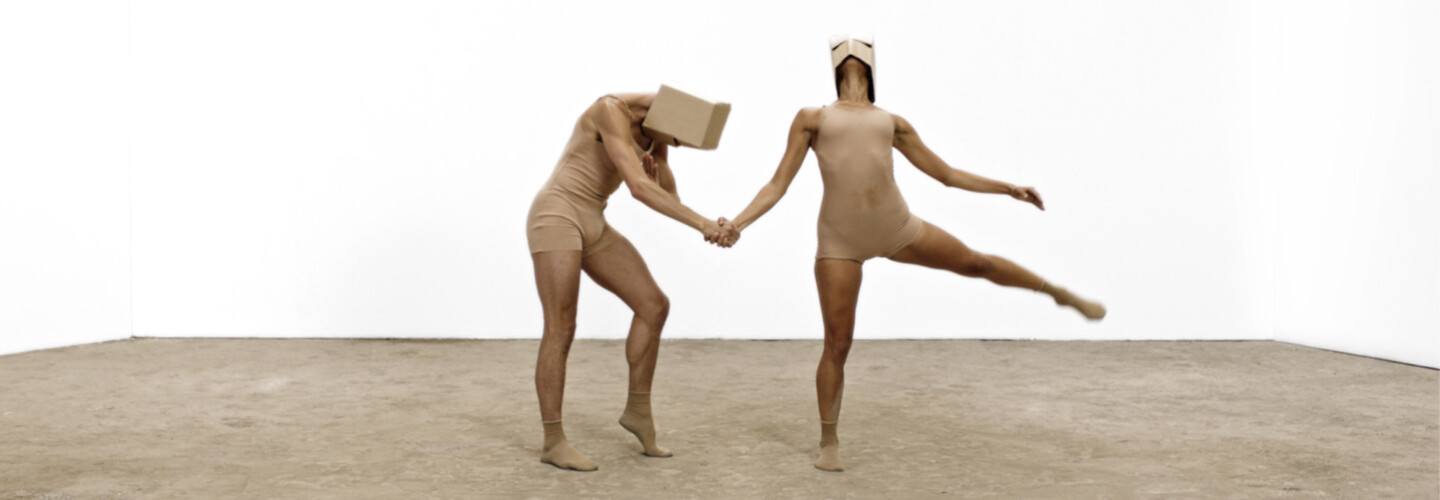
There is a considerable difference between the way you see yourself and the way that society sees you. You might view yourself as an individual, capable of unique thought and expression, but to the rest of the world, it’s likely you are seen as just another statistic. In a time of significant migration from southern and Eastern Europe to the North, known in Italian as La Fuga Dei Cervelli, which roughly translates to “Brain Drain”, people moving from A to B often struggle to maintain their identity and come to terms with what ‘home’ means to them. Co-directors Mathieu Mondoulet and Thibaut Eiferman combine their talents to create an expressive, fluid dance piece, told in two halves, that captures this feeling of dislocation and dissociation while striving to find a new identity at the same time. Premiering on DN’s pages today, we talk to the Parisian-based directors about meeting in dance class, being inspired by Italians in Paris and how they created the contrast between the film’s two distinct sections.
La Fuga Dei Cervelli tackles the brain drain phenomenon. What attracted you to this topic, especially in our current moment?
Thibaut Eiferman: In Paris, I keep meeting a lot of Italian people who keep talking about this expression. It’s very common among young people there to leave their country. I just kept thinking about how, even though it’s used in a political context, it really defined what a lot of people are experiencing right now, especially after COVID: this need to get back to an essential place or where we stand with nature. I wanted to illustrate that, not how it’s usually spoken about, but in a different way.
We found a relationship and a way for the camera to exist with the movement, explore it and form a duet between dance and the camera.
How did you two meet and what prompted you to start working together?
Mathieu Mondoulet: I’ve known Thibaut for three years. He’s actually one of my dance teachers in Paris. We worked together on our first project, A Hard Day’s Night, during the first pandemic. It was a really nice experience. As a great fan of his work, I always wanted to work with him. Thibaut is a choreographer and he had an amazing piece called HHH (Hand, Heart, Head). His desire was to make a short film on this topic and I jumped at the chance. The choreography already existed so we found a relationship and a way for the camera to exist with the movement, explore it and form a duet between dance and the camera.

Were there any dance movements that didn’t quite translate to the medium of film and you had to change?
TE: The first part of the film in the white box is very much things that already existed that were just extended for the film. Then we created actual choreography for the outside without thinking so much about frontality but imagining the camera going all around us. The fact we didn’t have to worry about the frontal took off a lot of the pressure. And then when we were actually filming, we also decided, because it was almost like a ritual, since there wasn’t an audience or any dialogue, that we needed to improvise being outside and being in the moment. We didn’t just copy things that already existed but gave some room during the day to how the situation made us feel. I think we got some of the greatest footage from the present moment, which is something a bit more difficult to capture in a fixed setting.
I’d love to know more about this setting, because the upwards pan halfway through seems to connect the two sections, revealing what I interpreted to be a kind of train station. What was it like finding the location and then building the set?
MM: It’s a huge warehouse near Paris. We made everything by ourselves with a tiny crew, a couple of friends and a free location. We had an intense afternoon of shooting. For the exterior sets, we fell in love with this amazing oak near the French Alps. I discovered this location with Thibaut when we were scouting for other projects about a year ago. At the top of the hill it’s a really powerful place. Again our crew was pretty minimalistic: I would say four people including Thibaut and Chiara. I was alone with my AC. It was a bit tricky. We shot only with natural light – I think the fact that the light itself is invisible adds poetry to our story – because we didn’t have the budget to stay for more than one day on set. Now we are through, I can tell you it’s pretty scary. It’s frustrating as well. But it was OK, finally.

And talking about these two distinct sections, how did you want to approach them visually? I noticed that it’s not only the dancing that loosens up in the second half…
MM: In both parts we worked with an Alexa Mini. For the first part we had a running gimble and for the other parts, only an easy rig. I agreed with Thibaut that the camera would be almost static during the first part of the story. I would say the dancers are almost trapped in this universe. But in the other part, the direction would be freer, without any more obstacles, no more choreography and improv only. I would say the same with the camera.
I think the fact that the light itself is invisible adds poetry to our story.
The most striking part in the first section are these paper bags. Because it seems to create a metaphor about working life and how the world sees you versus how you see yourself. What was it like approaching the costume design to create this aesthetic?
TE: I work with plastic mannequins and when they come in a box, the head comes in a separate box. When I was looking for costumes, I thought that if I’m trying to become the mannequin and come to peace with myself — as after all, he has a shaved head, he looks like me — maybe if I put my head in a box I can feel what it is like to be him. In that, there’s also the lack of sensation. Trying to find immobility. Trying to see how the world sees you from the outside. There’s a lack of perception a mannequin can have. I’ve always been interested in them because it looks like maybe their eyes are moving but they’re stuck inside their bodies. In order to look for this quality, the box on the head has these eyes that are constantly looking around, but there’s still something about the head that’s completely stuck. I think we kind of live our lives like that.




It really defined what a lot of people are experiencing right now: this need to get back to an essential place or where we stand with nature.
What are you both working on next?
TE: Hopefully, my piece is being programmed for 2023/24 on the outskirts of Paris. I have 30 more minutes to create. I’ve also got European tours coming up as a dancer.
MM: I have a couple of commercial things and documentaries, and a project for ARTE. I’m still working on this new project that I’m really excited about.


